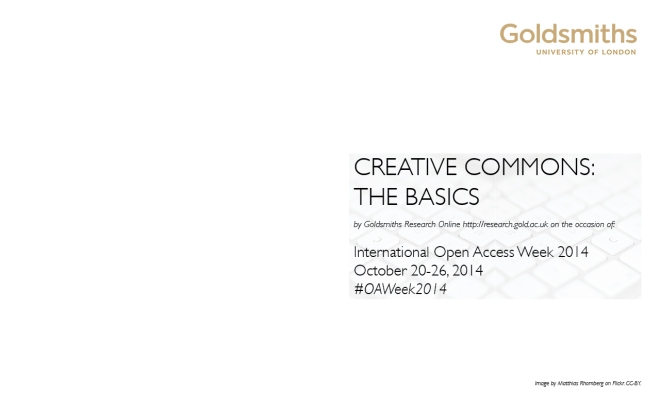Creative Commons (CC) is a licensing system that allows you to make your work open and accessible while at the same time keeping some rights.
To use Creative Commons licenses is easy: it is just a matter of indicating the type of CC license you wish to use along with your work. There is no additional procedure of registration.
Here is a list of the six main CC licenses:
CC BY (Attribution) allows others to distribute and build upon your work as long as they credit you as the original creator of the work.
CC BY-SA (Attribution-ShareAlike) allows others to distribute and build upon your work as long as they credit you as the original creator of the work and release their derivative work under an identical license.
CC BY-ND (Attribution-NoDerivs) allows others to distribute your work as long as they credit you as the original creator of the work and keep the original format of the work.
CC BY-NC (Attribution-NonCommercial) allows others to distribute and build upon your work non-commercially as long as they credit you as the original creator of the work and keep a non-commercial license for their derivative work.
CC BY-NC-SA (Attribution-NonCommercial-ShareAlike) allows others to distribute and build upon your work non-commercially as long as they credit you as the original creator of the work and release their derivative work under an identical license.
CC BY-NC-ND (Attribution-NonCommercial-NoDerivs) allows others to distribute your work as long as they credit you as the original creator of the work. However, they cannot change the work, or use it commercially.
In Goldsmiths Research Online, the default license for PhD theses that are publicly accessible is CC-BY-NC-ND (Attribution-NonCommercial-NoDerivs), the most restrictive of the six main CC licenses.

Leave a Reply